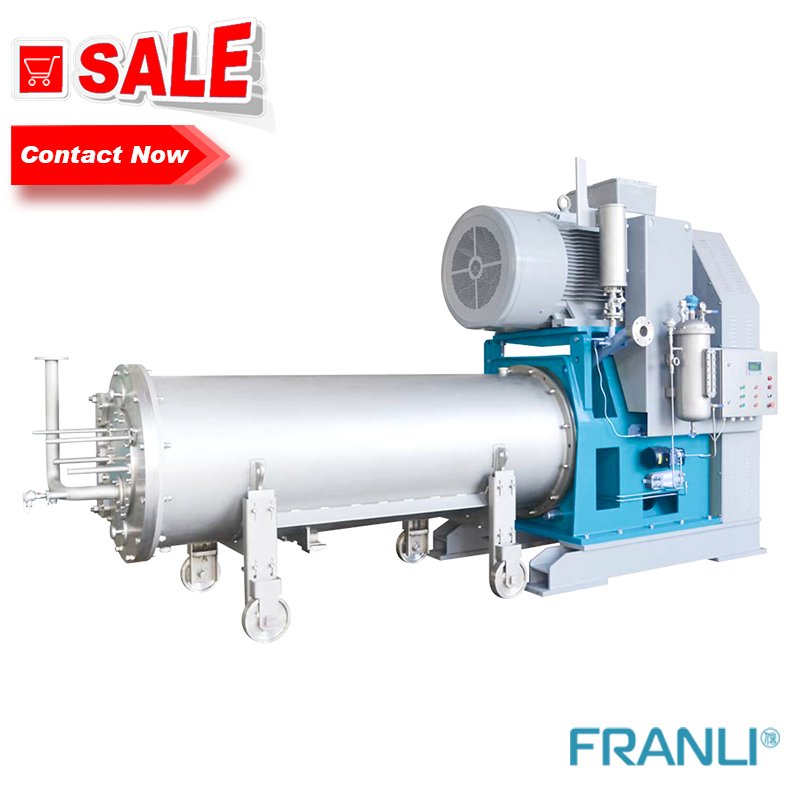-
Equipments
-
-
NEWS
- Double planetary mixer new t...
- Multiple paddle options of D...
- Double planetary mixer is th...
- Multiple mixing tanks with d...
- Double planetary mixer for c...
- Double planetary mixer can b...
- Double planetary mixer has E...
- Double Planetary Mixer Excel...
- Principle of asteroid rotati...
- Efficient and uniform mixing...
-
Contact Us
Or Contact Info
-
Coating
-
-
NEWS
- Double planetary mixer new t...
- Multiple paddle options of D...
- Double planetary mixer is th...
- Multiple mixing tanks with d...
- Double planetary mixer for c...
- Double planetary mixer can b...
- Double planetary mixer has E...
- Double Planetary Mixer Excel...
- Principle of asteroid rotati...
- Efficient and uniform mixing...
-
Contact Us
-
Adhesives
-
-
NEWS
- Double planetary mixer new t...
- Multiple paddle options of D...
- Double planetary mixer is th...
- Multiple mixing tanks with d...
- Double planetary mixer for c...
- Double planetary mixer can b...
- Double planetary mixer has E...
- Double Planetary Mixer Excel...
- Principle of asteroid rotati...
- Efficient and uniform mixing...
-
Contact Us
-
Agrochemistry
-
-
Agrochemistry
- Emulsifiable Concentrate
- Suspension Concentrate
-
-
-
NEWS
- Double planetary mixer new t...
- Multiple paddle options of D...
- Double planetary mixer is th...
- Multiple mixing tanks with d...
- Double planetary mixer for c...
- Double planetary mixer can b...
- Double planetary mixer has E...
- Double Planetary Mixer Excel...
- Principle of asteroid rotati...
- Efficient and uniform mixing...
-
Contact Us
-
Battery
-
-
Battery
- Battery Slurries
-
-
-
NEWS
- Double planetary mixer new t...
- Multiple paddle options of D...
- Double planetary mixer is th...
- Multiple mixing tanks with d...
- Double planetary mixer for c...
- Double planetary mixer can b...
- Double planetary mixer has E...
- Double Planetary Mixer Excel...
- Principle of asteroid rotati...
- Efficient and uniform mixing...
-
Contact Us
-
Cosmetic
-
-
Cosmetic
- Lipstick
- Eyebrow Pencil
- Ointment
-
-
-
NEWS
- Double planetary mixer new t...
- Multiple paddle options of D...
- Double planetary mixer is th...
- Multiple mixing tanks with d...
- Double planetary mixer for c...
- Double planetary mixer can b...
- Double planetary mixer has E...
- Double Planetary Mixer Excel...
- Principle of asteroid rotati...
- Efficient and uniform mixing...
-
Contact Us
Wet Bead Mill|Bead Mill For Sale
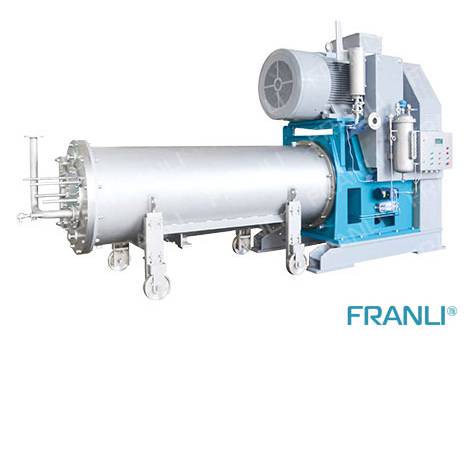 Wet Bead Mill
Wet Bead Mill
Wet bead mills are used for grinding and dispersing granular materials to micro and nano-scale grinding. It has the characteristics of simple operation, high separation efficiency, high grinding fineness, and is equipped with an advanced cooling system to achieve large flow production.
Application:
New energy nanomaterials, coatings, medicines, cosmetics, etc.
Main Parts
A Mill that is specially designed for grinding and dispersing particles down to micro and nano scales is termed a wet bead mill. This apparatus agitates beads (grinding media ) in a cylinder-shaped vessel to disperse or grind very minute particles in viscous fluids. The wet bead mill's rotor causes bead motion, which causes intense shear force and impact on the particles. By optimising the media size, rotor speed, and rotor type, the energy and impact force that materialise the best condition for each material are adjusted. The wet bead mill is used for a variety of tasks, including grinding relatively large particles and dispersing nanoparticles. Particles as small as a micron or a submicron are effectively reduced to finer particles as small as a few tens of nanometers with the help of a wet bead mill.
Application fields of wet bead mill:
A wet bead mill is used to grind food materials, metal oxide for glaze, iron oxide for magnetic tape, dispersing barium titanate for MLCC, and titanium oxide for UV care liquids, among other things. The demand for nanoparticle dispersion has skyrocketed in recent years, particularly in this decade. In addition to traditional applications, wet bead mills are used to disperse particles ranging in size from 20 to 100 nm. Organic pigment dispersions for LC colour filters, zirconia for hard coatings, and barium titanate for advanced MLCCs are examples of such applications.
Dispersing conditions with low impact energy are required for these applications. As a result, the demand for wet bead mills that use microbeads has been increasing. Grinding pharmaceutical nanoparticles is another emerging technology. An efficient grinding with less contamination of metal elements such as zirconium, aluminium, and chromium is required.
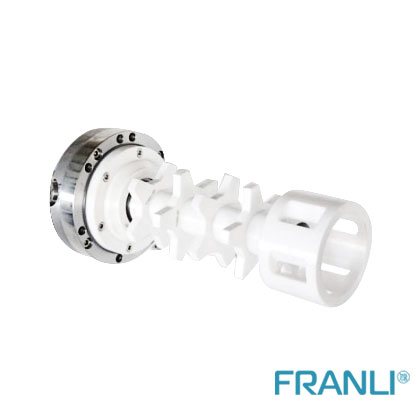
How does this bead Mill work?
The principle of operation is that a shaft fitted with grinding discs rotates within a fixed grinding chamber that has been charged with the desired grinding beads. The mill-base is pumped through the grinding chamber, and the high-speed disc rotation moves the beads and mill-base mixture. A slotted screen separates the product from the grinding beads at the outlet.
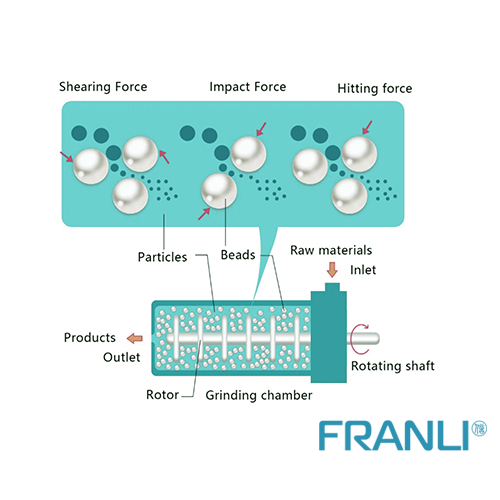
Bead selection and its importance:
The most important factor in milling practises is bead size. Large beads, larger than 0.5 mm in diameter, are sufficient for grinding micron-size particles into submicron-size particles. Small beads of 0.3 mm or less in diameter are used to grind or disperse submicron or nanometer-sized particles. A large impact is not always required for dispersing, and smaller beads provide faster processing rates as the frequency of contact between a bead and a particle increases. The appropriate impact energy for milling, which is controlled by the bead size, rotor speed, and mass of the beads charged in the mill, is determined by the particle size and hardness.
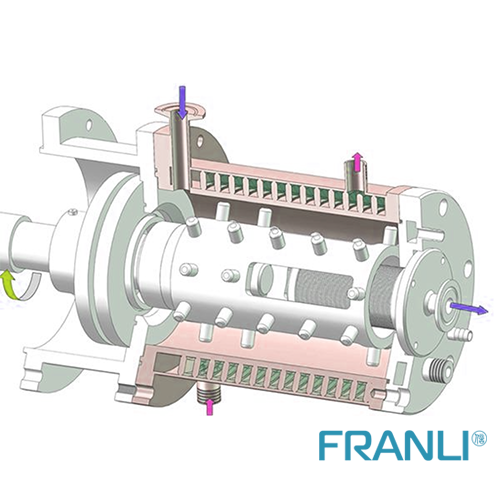
The frequency of impact between a bead and a particle, which is determined by the rotor speed and bead size, influences the processing rate. The inter-bead space influences the final particle size after milling. The size of the interbead space is proportional to the size of the beads, so smaller beads have a greater chance of contacting the finer particles. It should be noted that the inter-bead space is the area surrounded by beads when they are tightly packed.
grinding process of wet bead mill:
When grinding large or hard particles, high impact energy must be applied to the particles. Because the mass and speed of the beads determine the intensity of the energy, large beads with a high speed are required for grinding large and hard particles. When grinding hard particles such as silica, alumina, and hard natural ores, relatively large beads greater than 0.3 mm in diameter are used as a grinding medium. Large beads, on the other hand, are not always suitable for grinding processing. The size of the beads influences the final particle size. In the case of grinding minute particles as small as 200 nm or finer, beads as small as 0.1 or 0.3 mm are used for grinding. Furthermore, because their larger surface area increases the frequency of impact between beads and particles, smaller beads reduce processing time.
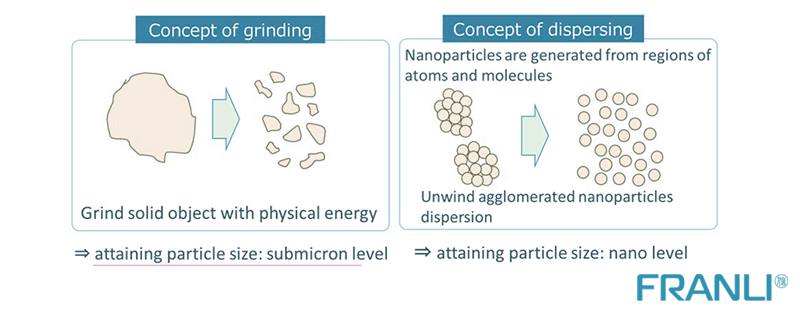
As a result, milling with smaller beads results in a faster processing rate if the particles are soft and the required impact energy is low. When grinding fine particles with diameters of 200 nm or less, the size of the beads is critical. Because the inter-bead space between larger beads is larger, there are fewer opportunities for the particles to come into contact with the beads, resulting in poor grinding efficiency. As a result, practice with small beads is required for grinding fine particles. Beads must be 10 to 30 times the maximum particle size of the raw material and 1,000 to 3,000 times the mean particle size after milling.
Dispersion process of wet bead mill:
The basic concept of bead size selection for dispersing processing is similar to that of grinding processing. The impact energy required for dispersion is controlled so that it does not damage the primary particles while also being sufficient to tear a cluster into primary particles. Damage to the particles is undesirable because each particle is made in the intended size that provides the appropriate properties designed for the final products. The fine fractions act as a binder for re-agglomeration of the particles, so even long-term processing does not complete dispersion. As a result, the impact energy is controlled so that it is neither too strong nor too weak.
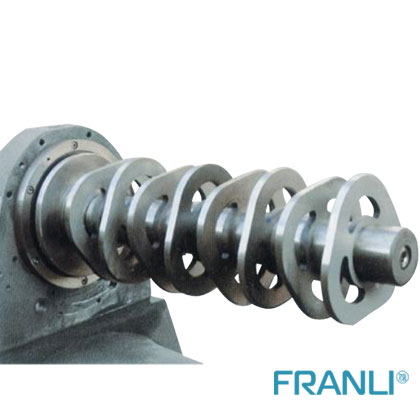
Applying low-impact energy via small beads is thus critical for dispersing processing to obtain minimally damaged nanoparticles. Furthermore, small beads provide a high frequency of particle-bead impacts, resulting in a high processing rate. As the primary particles become smaller, it is necessary to select smaller beads in dispersion processing. The ideal bead size is also 1,000 to 2,000 times that of the primary particles. The primary particle size in many cases of modern dispersing practises is 10 to 200 nm, so the bead size to be selected is generally smaller than that for grinding processing.
FLE specializes in selling high-speed and more customized dispersers and mixers as well as wet bead mill. The mills they sell are made with reliable parts and are specially designed to meet customer needs.
Related Products
More
-
Vacuum Double Planetary Mixer
A Vacuum double planetary mixer is an essential part of any industry to mixing particular material. A double planetary m...
-
Laboratory Double Planetary Mixer
Laboratory double planetary mixer is a kind of non-standardized strong mixing and mixing equipment developed by FLE for ...
-
Hydraulic Lifting High Speed Disperser
The hydraulic lift high speed disperser has the characteristics of simple operation and high flexibility.The hydraulic l...
-
SMP Agitator bead mill
This SMP Agitator bead mill is used in the paint, ink, and coating industries to ready the equal-sized particles of a pa...
-
TRS-Three Roll Mill For Lipstick
TRS Three roll mill is widely used in milling paste material including paint, inks, China ink, pigment, coatings, food, ...
-
Basket Mill Machine
What is a FLE Basket Mill? Our basket mill combines dispersing and grinding into a single machine that is suitable for g...
News
-
28
2023-04
-
28
2023-04
-
28
2023-04
-
28
2023-04
-
28
2023-04
-
28
2023-04
-
Bead Mill
- SMP Agitator bead mill
- Zirconia beads for sale|Zirconia beads price
- Wet Bead Mill|Bead Mill For Sale
- Sand Mill Machine|Sand Mill For Paint
- Sand Mill|Wet Grinding Equipment Manufacturer
- Bead Mill Machine
- Vertical sand mill
- Bead mill for paint
- Horizontal sand mill
- Turbine bead mill
- Lab bead mill
- Nano Mill
- Vertical Bead Mill
- Bag Filter
- Zirconia Beads
- Pearl Mill
- Dyno mills
- Horizontal Bead Mill
- Agitator bead mill
- Sand Mill
-
Three Roll Mill
-
Twin Shaft Disperser
-
High Speed Disperser
-
Basket Mill
-
High Shear Mixer
-
Double Planetary Mixer
-
Chemical Reactor
-
Kneader
-
Filling Machine
-
Multi-Shaft Mixer
-
Attritor Mill
-
Ribbon Blender
-
Pneumatic Mixer
-
Static Mixer
-
Nitrogen Generator
-
Production Line
- Tricks About Ointment Mill You Wish You ...
- A deep insight into Sand Mill Machine
- What is the difference between dyno mill...
- How To Choose Vertical Bead Mill or Hori...
- What is a three roll mill machine?
- Specification of high speed disperser an...
- Three Roll Mills: Their mechanism, advan...
- high speed disperser machine application
- Faults and Trouble Shooting Methods of H...
- How to operate High-Speed Disperser













